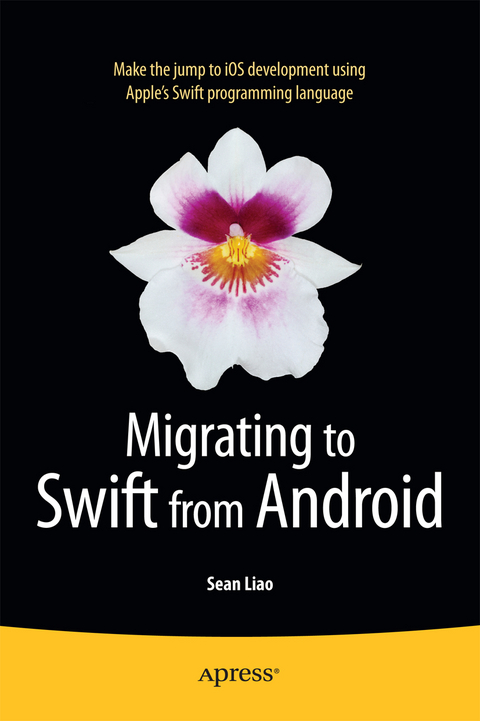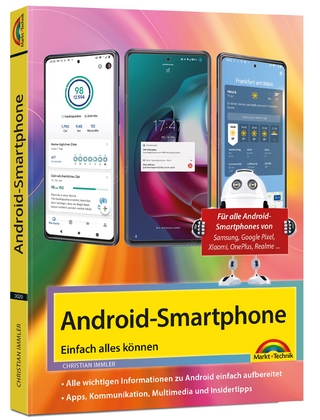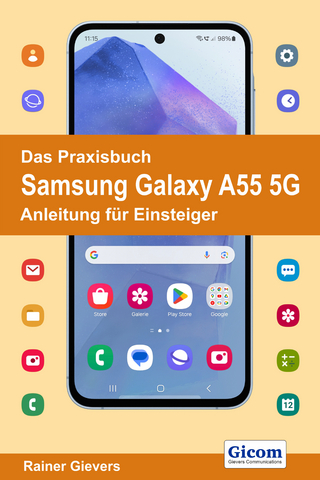
Migrating to Swift from Android
Seiten
2014
|
1st ed.
Apress (Verlag)
978-1-4842-0437-5 (ISBN)
Apress (Verlag)
978-1-4842-0437-5 (ISBN)
In 250 pages, Migrating to Swift from Android gives you—as an experienced Android app developer—all you need to create native iOS apps using the latest Swift programming language. Starting with preparing your Xcode 6.1 IDE and introducing just enough iOS application framework fundamentals, you'll understand how to create meaningful Swift applications for iOS 8 immediately.
After the short IDE setup guide, this book continues by providing guidance on how to translate your existing Android apps to iOS. Every topic comes with a tutorial project; you'll plan and structure your iOS apps following a typical top-down process using Xcode Storyboards. To implement use cases, you'll cover common mobile topics, including user interfaces, managing data, and networking with remote services. As you move through Part 2 of this book, you'll create simple and meaningful iOS apps with rich UI components to handle common CRUD operations locally and remotely.
Part 3 demonstrates the whole porting process by translating a typical mobile app from Android to iOS 8 from start to finish. When you finish reading Migrating to Swift from Android, you'll be an iOS developer as well as an Android developer. And, you will be fully convinced you can create iOS apps just like you do in Android. In most cases, it is a waste not to port your native Android apps to iOS.
After the short IDE setup guide, this book continues by providing guidance on how to translate your existing Android apps to iOS. Every topic comes with a tutorial project; you'll plan and structure your iOS apps following a typical top-down process using Xcode Storyboards. To implement use cases, you'll cover common mobile topics, including user interfaces, managing data, and networking with remote services. As you move through Part 2 of this book, you'll create simple and meaningful iOS apps with rich UI components to handle common CRUD operations locally and remotely.
Part 3 demonstrates the whole porting process by translating a typical mobile app from Android to iOS 8 from start to finish. When you finish reading Migrating to Swift from Android, you'll be an iOS developer as well as an Android developer. And, you will be fully convinced you can create iOS apps just like you do in Android. In most cases, it is a waste not to port your native Android apps to iOS.
Sean Liao (PMP@) has been written mobile code for PalmOS, JavaME, Microsoft .NETCF, and BlackBerry, and he also has some Nokia Symbian experience since 2000. In 2009, Sean started iOS programming, and then began Android programming the same year by following the same porting strategy, based on years of hands-on mobile programming experience. Currently, Sean is primarily engaged in creating iOS apps and porting them to Android as a bonus.
Part 1: Prepare Your Tools 1. Setting Up the Development Environment 2. iOS Programming Basics Part 2: Come Sail Away: A Roadmap for Porting 3. Structure Your App 4. Implement Piece by Piece Part 3: Pulling It All Together 5. Recap with a Case Study
| Zusatzinfo | 145 Illustrations, black and white; XI, 268 p. 145 illus. |
|---|---|
| Verlagsort | Berkley |
| Sprache | englisch |
| Maße | 178 x 254 mm |
| Themenwelt | Informatik ► Betriebssysteme / Server ► Android |
| Informatik ► Betriebssysteme / Server ► Macintosh / Mac OS X | |
| Informatik ► Programmiersprachen / -werkzeuge ► Mac / Cocoa Programmierung | |
| Informatik ► Weitere Themen ► Hardware | |
| Informatik ► Weitere Themen ► Smartphones / Tablets | |
| Schlagworte | Android (Betriebssystem); Spezielle Anwendungsbereiche • Swift (Programmiersprache) |
| ISBN-10 | 1-4842-0437-9 / 1484204379 |
| ISBN-13 | 978-1-4842-0437-5 / 9781484204375 |
| Zustand | Neuware |
| Informationen gemäß Produktsicherheitsverordnung (GPSR) | |
| Haben Sie eine Frage zum Produkt? |
Mehr entdecken
aus dem Bereich
aus dem Bereich
leichter Einstieg für Senioren
Buch | Softcover (2024)
Markt + Technik Verlag
19,95 €
Anleitung für Einsteiger
Buch | Softcover (2024)
Rainer Gievers (Verlag)
21,50 €


